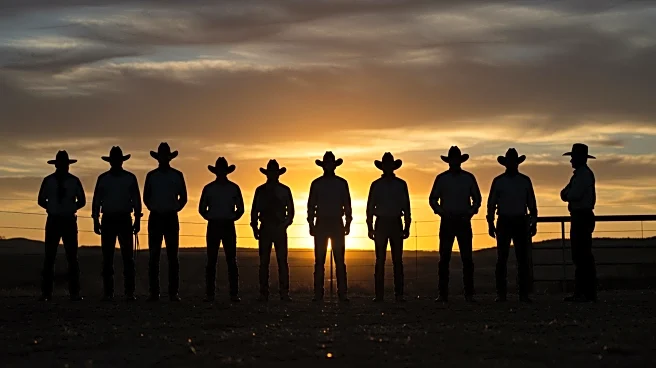What's Happening?
Mexican ranchers near the Guatemala border are facing a severe outbreak of flesh-eating screwworms, exacerbated by illegal cattle smuggling from Central America. Rancher Julio Herrera highlights the lack of health controls on cattle crossing the border, which contributes to the spread of the parasite. The infestation has resulted in over 30 human cases and the death of an 86-year-old woman in Campeche. The illegal cattle trade, linked to organized crime, bypasses government checkpoints and sanitary inspections, leading to significant economic losses for the Mexican meat industry. The U.S. has closed its border to Mexican cattle since May, impacting trade and beef prices.
Why It's Important?
The screwworm outbreak poses a significant threat to the Mexican cattle industry, with estimated losses of $25 to $30 million monthly. The closure of the U.S. border to Mexican cattle affects a billion-dollar export market, straining trade relations between the two countries. The situation underscores the need for stronger border controls and health measures to prevent further economic and public health impacts. The outbreak also highlights the role of organized crime in livestock trafficking, which complicates efforts to manage the crisis.
What's Next?
Mexico's federal government is constructing a $51 million plant in Chiapas to breed sterile screwworm flies, with U.S. support, expected to be operational by 2026. Efforts to control the outbreak include deploying screwworm-detecting dogs and offering free care to producers reporting infections. The Mexican government faces pressure to negotiate a trade deal with the U.S. within three months or risk increased tariffs. Local authorities are focusing on awareness and prevention, but challenges remain in effectively controlling the parasite's spread.
Beyond the Headlines
The outbreak raises concerns about the broader ecological impact, as screwworms can infect various warm-blooded animals, including wildlife. The situation highlights the need for comprehensive strategies that address both livestock health and environmental conservation. Additionally, the crisis reveals vulnerabilities in cross-border trade and the influence of organized crime on agricultural practices.













